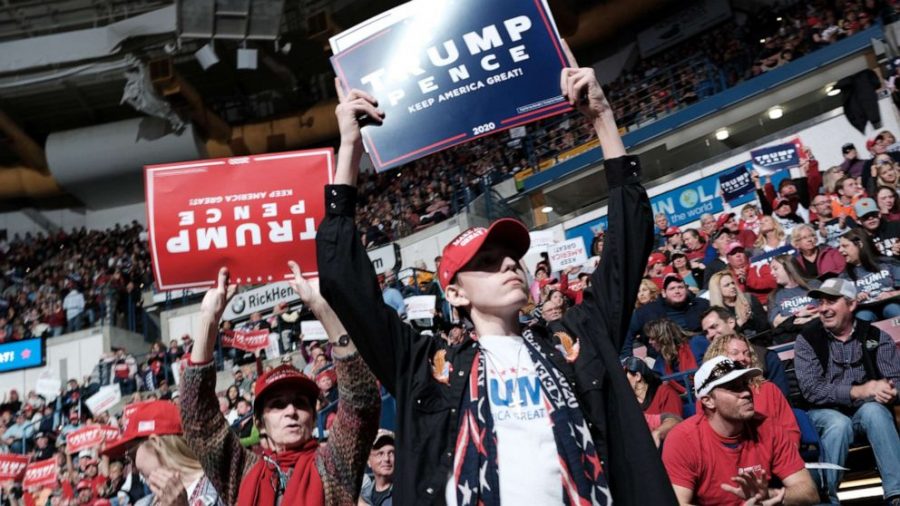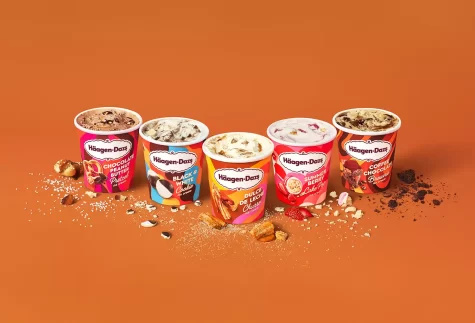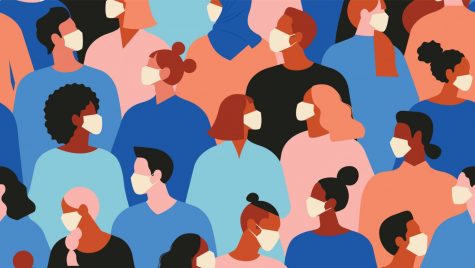Election 2020: make America great again for who?
On November 8, 2016, Donald Trump became the 45th president winning 306 pledged electoral votes. This was politically upsetting as many people overestimated Hillary Clinton’s chances of winning and underestimated Trump’s chances. Since then key moments of his presidency have been America’s redaction from the Paris Accords, the 90-day travel ban on Muslim-majority countries, a trade war with China, his plan to build a wall across the Mexican border, the withdrawal of troops from Syria, the controversial appointments of Brett Kavanaugh and Amy Coney Barrett for Supreme Court Justices, meetings with North Korean dictator Kim-Jong Un, Trump’s impeachment and the assassination of Iranian General Qasem Soleimani.
According to the Voter Studying Group, 66.67 percent of people who voted for Trump were white Americans who did not have a college degree. He also did better than Clinton, in the older demographic which is the generation that is the least racially diverse. Those – Many of his supporters were also from low-income households (making $30,000 or less). The correlation between Trump supporters and low-income white households is strong., Some poor white people have resentment towards Muslims, are in favor of making the immigration process harder, and are opposed to modern feminism. They worry about rising diversity as a threat to their own interests. They are unenthusiastic about free trade agreements as NAFTA destroyed much of industry in the U.S. when multinational corporations moved to Mexico. This has fueled resentment toward Mexicans and not the corporations themselves.
Sociologist Arlie Hochschild gives an example as to how Trump supporters feel: “you are patiently standing in the middle of a long line stretching toward the horizon, where the American Dream awaits. But as you wait, you see people cutting in line ahead of you…The government has become an instrument for redistributing your money to the undeserving. It’s not your government anymore; it’s theirs.” Claudia Goldin, an economist claims that the rise of xenophobia usually happens directly after a large and lingering crisis. Trump supporters feel that they are unable to achieve the American Dream. They also feel that immigrants and people of color have unfair advantages. The reason Trump appeals to low-income demographics is that he fuels their attitudes and grievances of economic, cultural and social change.
Trump has failed to handle the COVID-19 pandemic in the United States minimizing the danger and often disregarding the advice of many health officials. He has also made very controversial statements during his campaign and presidencies that are often false and border on conspiracy theories.
On October 2nd, Trump revealed on Twitter that he and the first lady, Melania Trump, had tested positive for coronavirus. Earlier, he announced on Twitter that his personal advisor, Hope Hicks, tested positive as well. After months of downplaying the impact of the pandemic, the two would be quarantined in the White House for an unknown period of time, according to the New York Times. He held crowded rallies despite the public health officials’ instructions and doubted the effectiveness of masks many times.
There was hope that the president would learn from his diagnosis and advise his supporters to wear masks and listen to public health messages. Instead, after receiving some of the best care in the country, he tweeted that people shouldn’t be scared of COVID-19 and to “not let it dominate [their] lives.” To people whose lives were affected by the pandemic, this was seen as incredibly insensitive. On October 6th, Trump made a tweet comparing coronavirus to the flu and said we will “learn to live with it”. The post was taken down.
He also gets a lot of his information from Twitter and Facebook accounts that are alt-right and often contain conspiracy theories about the pandemic, Democratic politicians, and world leaders. One prominent example is QAnon.
According to a poll from the Public Religion Research Institute (PRRI), over 75 percent of Trump supporters are Republicans. There is a divide between Republicans, however, those who trust Fox News and those who don’t, but 76 percent of Republicans trust them. Fox News is strongly biased towards conservative ideals and has failed multiple fact checks, according to Media Bias Fact Check.
Since Republicans have been prone to trusting Fox News, they feel obligated to agree with the president whenever he talks to the network. For example, a PRRI poll says that over 90% of Fox News Republicans believe that Trump handled the pandemic well. However, while Trump was saying that the majority of COVID-19 cases are “totally harmless”, according to The Atlantic, the U.S. death toll passed 220,000 on October 19.
Trump appeals to the poor, white and uneducated demographic as he exploits their fears for his own political gain, preys on their heightened sense of American exceptionalism. He makes empty promises and presents himself as an everyday man despite being a billionaire. It’s a dangerous thing because his supporters often don’t connect the dots as to why their lives are not being raised from poverty and Trump presents them with simplistic scapegoats. This is why they surprisingly vote against their own interests such as health care and free college. Trump does not care for the people that support him and uses them to support his narcissistic self-image. This November, make sure to vote with facts, not fear.











